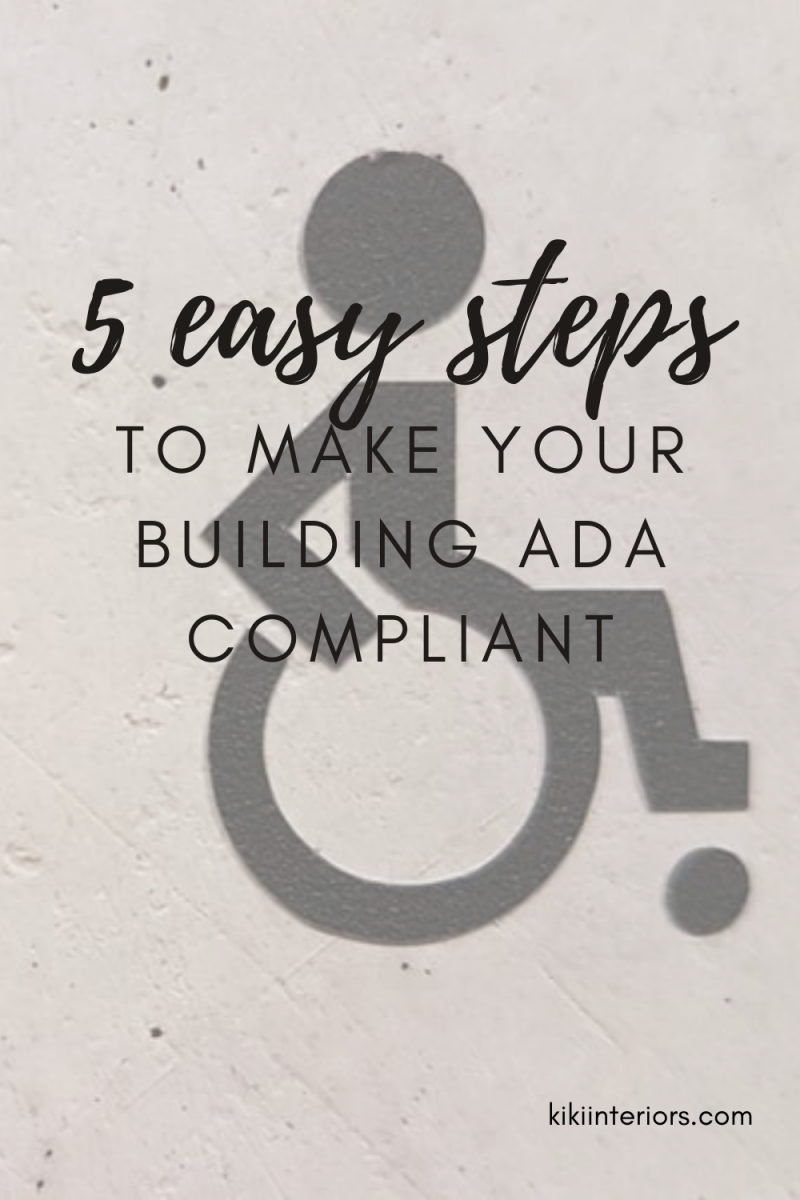
The Americans with Disabilities Act (ADA) was passed in 1992 to ensure public spaces in the United States are accessible to the mobility-impaired. It applies not just to new construction, but also to businesses, offices, stores, and other public facilities. Unfortunately, there are some exceptions to the rule that have led building owners to neglect important aspects of ADA compliance, which can leave buyers in a difficult position.
Have you recently purchased a commercial or public building and want to make sure it’s accessible to everyone? Don’t assume the last owner has already done all the work. Read on to find out about five steps every business or property owner should take to ensure compliance.

Create Accessible Parking
Accessible parking spaces, designated with the international symbol of accessibility, are intended for those who can’t traverse moderate distances through the lot. Every commercial or public building needs to have at least one, but the ADA further stipulates that business owners need to have at least one accessible parking spot for every 25 regular spaces.
The accessible spaces need to be located as close as possible to the entrance and bordered by marked access aisles so people have plenty of room to exit their vehicles. Leave five feet of space for normal, accessible parking spots and eight feet for van-accessible spaces.

Ensure Access to Entrances and Routes
The most obvious problem for most property owners is entryways that are accessible only by stairs, but the route into the building isn’t the only one they should pay attention to. Customers, clients, or employees who use wheelchairs or scooters should also be able to move around the building easily. Office owners can learn more at klein-usa.com about one great solution for ADA-compliant interior doors.
Update the Restrooms
Public restrooms are one of the most difficult areas of the building to renovate because there are so many stipulations. It’s not just about adding an accessible stall. Read through the ADA checklist to see what needs to be changed, and find a contractor with specialized experience retrofitting old buildings for ADA compliance.

Add Cord Covers and Ramps
Ramps aren’t just for building entrances. They may also be needed to help wheelchair-bound employees, customers, or clients safely traverse halls and rooms. If there are areas where electrical wiring or hoses cross the floor, those potential obstructions need to be covered by a ramp.
Low-profile cord protectors offer a perfect solution for covering extension cords and data cables. For hoses, a heavy-duty polyurethane cord protector may be a better fit.
Remove Accidental Barriers
Even buildings that have already been retrofitted to ensure ADA compliance may need to be updated if the previous building owner did not prioritize maintenance. If the paint in the parking lot has faded, a previously pressurized door has stopped working properly, or objects have been left in narrow halls during or after a maintenance job, these issues can all cause problems for new business owners. New property owners are responsible for bringing the building back into compliance, so fix these problems as soon as possible.
The Bottom Line
Ensuring ADA compliance won’t just help property owners avoid legal issues. It will also allow a more diverse group of people to work in and patronize their businesses. Take the time to ensure compliance now before lack of accessibility becomes a problem for a potential employee, guest, customer, or client.



